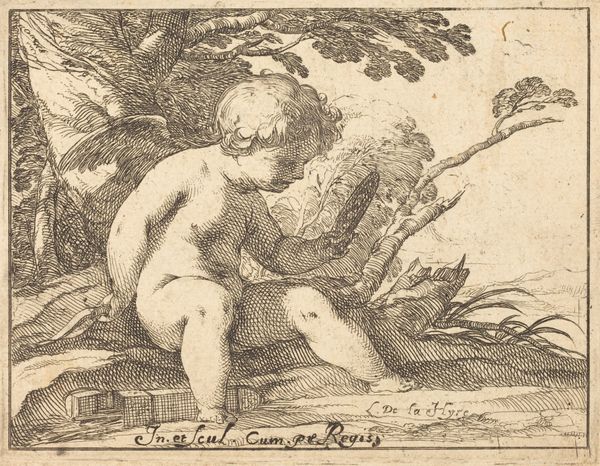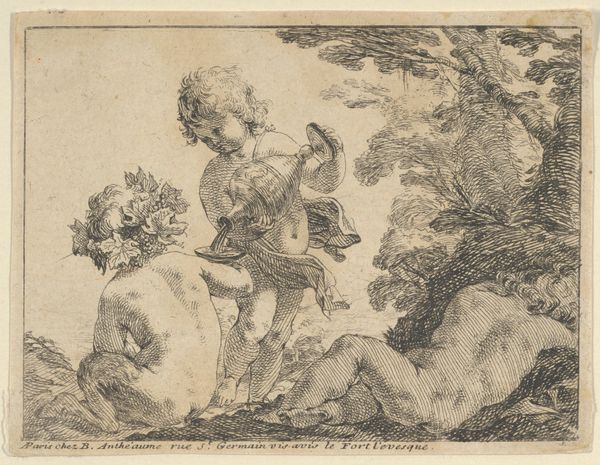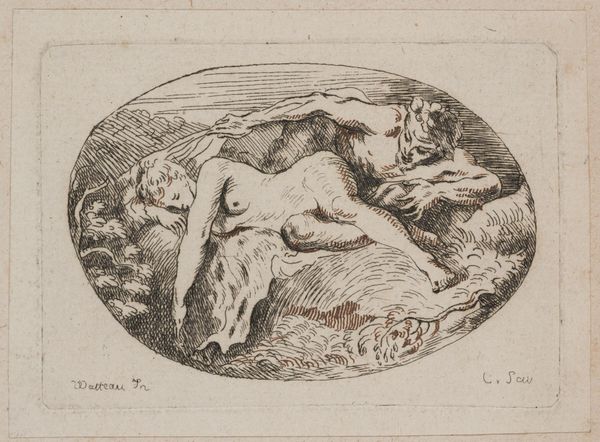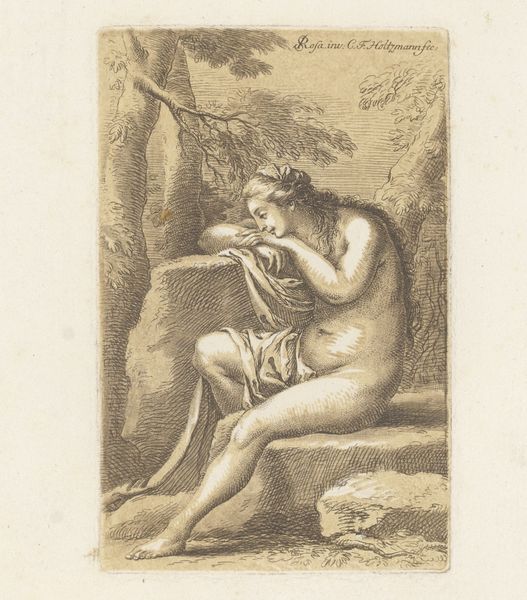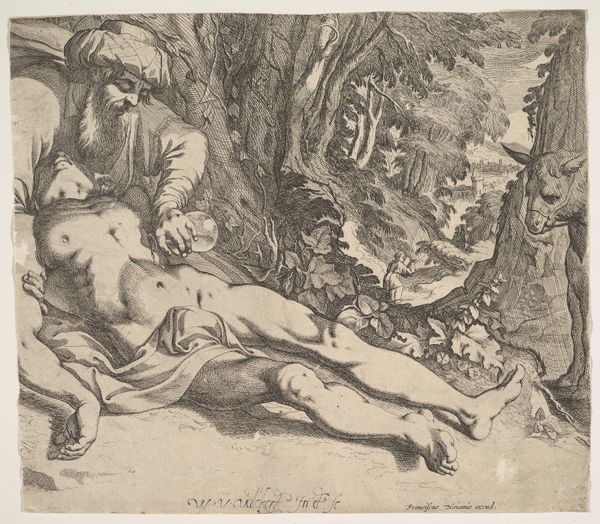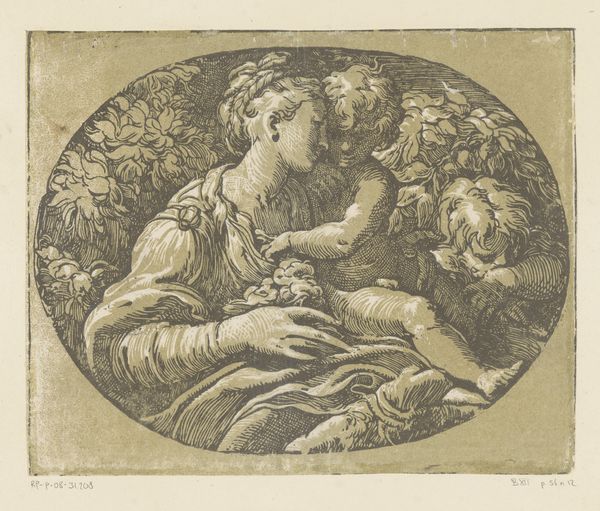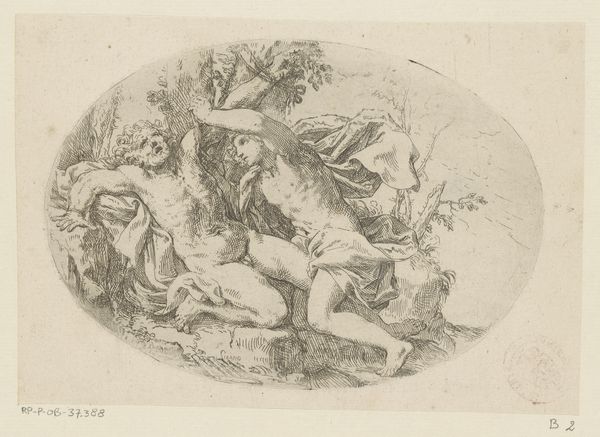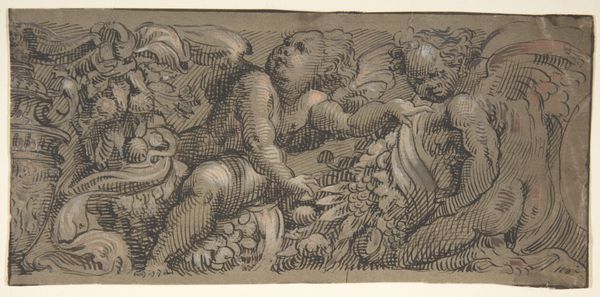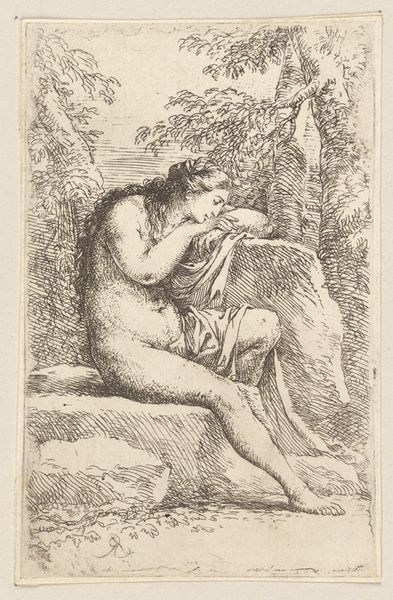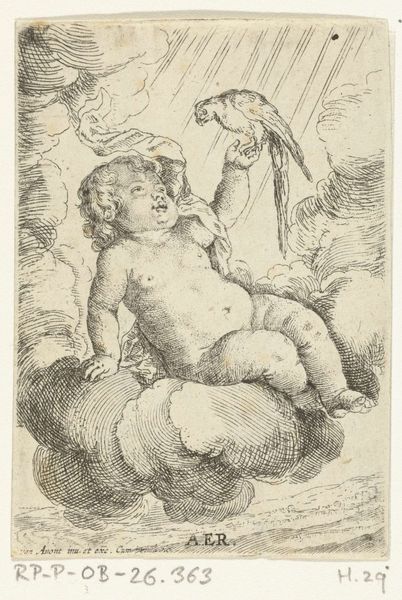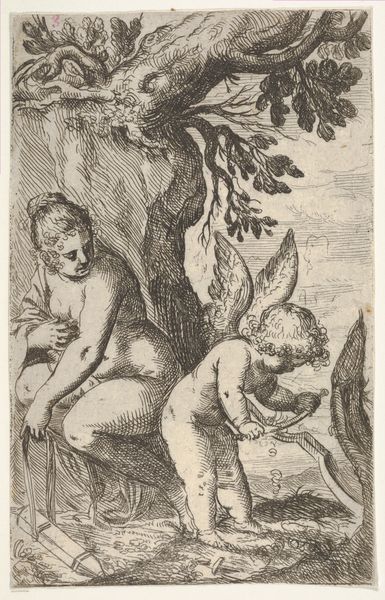
print, engraving
#
baroque
# print
#
landscape
#
figuration
#
genre-painting
#
engraving
Dimensions: plate: 7.1 x 10.1 cm (2 13/16 x 4 in.) sheet: 9.8 x 12.7 cm (3 7/8 x 5 in.)
Copyright: National Gallery of Art: CC0 1.0
Curator: There's a palpable innocence, even vulnerability, in these clustered figures—a gentleness amplified by the swirling strokes that render them. Editor: We're looking at Laurent de La Hyre's "Four Bacchic Children," an engraving that dates to around the 1620s. La Hyre offers us a vision rooted in classical themes, but refracted through his distinctive sensibility. Curator: Bacchic, certainly, but far from the frenzied revelry one might expect. This is the mythic infancy, a safe prelude to the wine god's later escapades. I can imagine this imagery being very palatable in bourgeois households during this era, something to put on display. Editor: Yes, these aren't Caravaggio's brazen Bacchuses! There is, of course, the historical backdrop—the Counter-Reformation influencing even secular art with a strain of morality and reserve. The unbridled nature, a hallmark of Bacchic imagery, has been thoroughly pruned in deference to prevailing religious and cultural mores. It domesticates divinity. Curator: Yet, this pastoral scene isn't devoid of symbolism. Observe the figures, intertwined within a landscape heavy with leafy vegetation, and the prominent positioning of a discarded barrel on its side—the symbolic presence of the vine lingers, though controlled. It is like they have the instrument to the excess, but it’s left aside as these young characters revel in childlike discovery, hinting that pleasure can exist beyond intoxicating revelry. The very notion of childhood offers freedom from rigid moral constraints. Editor: Exactly, we see La Hyre engaging in a subtle social dialogue, hinting at libertine ideas but never overtly challenging norms. What does it say about the emerging art market in Paris? This print offered access to these mythic allegories to a much broader audience beyond courtly or aristocratic patrons. It makes us ask: How do these classical symbols evolve as they move from court to print? Curator: A compelling reflection—this art embodies continuity through transformation, showcasing the ability of symbols to retain echoes of earlier meanings as it mirrors contemporary values. It speaks to the very essence of memory itself! Editor: It's fascinating how La Hyre's era imbued its own concerns into those antique echoes. We are both seeing those voices through a later vantage as well.
Comments
No comments
Be the first to comment and join the conversation on the ultimate creative platform.
